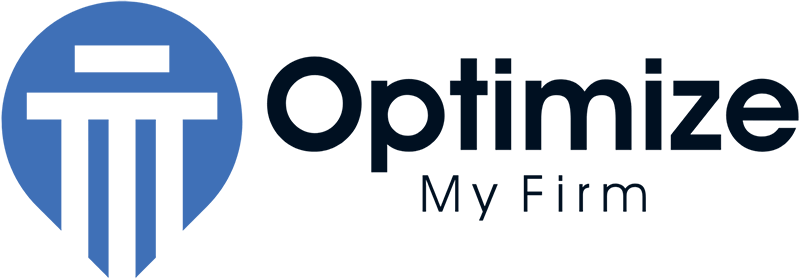 At first glance, the proposed “Protecting Automobile Accident Victims from Attorney Self-Dealing Act” is a reform measure backed and promoted by consumer protection groups. However, upon deeper examination, you learn that the ride-sharing company Uber actually is pushing this proposed amendment to the California Constitution. With enough signatures, Initiative 25-0022 would appear on the November 2026 ballot.
At first glance, the proposed “Protecting Automobile Accident Victims from Attorney Self-Dealing Act” is a reform measure backed and promoted by consumer protection groups. However, upon deeper examination, you learn that the ride-sharing company Uber actually is pushing this proposed amendment to the California Constitution. With enough signatures, Initiative 25-0022 would appear on the November 2026 ballot.
The Uber-backed initiative would in automobile crash cases:
- Cap attorney contingency fees
- Limit what counts as recoverable medical expenses
- Restrict referrals by personal injury lawyers to medical providers
- Prohibit personal injury lawyers from financially benefiting from referring clients to medical providers
Below, we discuss the requirements under the proposed initiative, why Uber and other tort reformers seek them, and what they mean for car accident lawyers and their clients.
The Contingency Fee Cap:
If adopted, Initiative 25-0022 provides that automobile crash victims are to receive at least 75 percent of the recovery. In other words, attorneys may not collect more than one-fourth in contingency fees in these cases. This, along with limits on recoverable past, present, and future medical expenses, can lower recoverable damages for clients and fees for attorneys.
A Review of Contingency Fees:
In a contingency fee arrangement, the lawyer’s fee is a percentage of the recovery in a settlement or judgment. Attorneys take motor vehicle crash, medical malpractice, products liability, and other personal injury cases on a contingency fee basis because there exists a ready source of funds – insurance. Under California law, motorists must carry liability insurance, and many drivers have uninsured and under-insured motorist coverage. Manufacturers, dealers, and commercial property owners have commercial and other liability insurance policies.
California law does limit contingency fee percentages in certain types of personal injury cases. Section 6146 of the California Business and Professions Code caps contingency fees in medical malpractice cases at 25 percent of the settlement before a lawsuit. If the lawyer files a lawsuit, the lawyer may collect up to one-third of the recovery, whether the case later settles or a jury awards damages.
Beyond malpractice cases, personal injury attorneys do not presently face any specific or set percentage limits for contingency fees.
Proponents of Initiative 25-0022 and its contingency fee cap proclaim the need to protect personal injury victims from unscrupulous personal injury lawyers. In theory, these and the other limits imposed by the Initiative would discourage plaintiffs and their lawyers from driving up damages to fetch a higher attorney fee.
Yet, Section 6147 already requires lawyers to advise clients in writing that California law does not establish minimum fees, but the attorney and client may negotiate the level of the contingency fee. Arrangements for contingency fees must be in writing.
Further, attorneys operate under the general prohibition against “unconscionable fees.” In judging whether a fee is “unconscionable,” California’s ethics rules call for consideration of factors such as:
- The lawyer’s experience and skill
- The client’s level of sophistication, especially when compared with that of the lawyer;
- The complexity of the case
- The prior attorney-client relationship
Limits on Referrals:
The “Protecting Automobile Accident Victims from Attorney Self-Dealing Act” limits to whom an attorney may refer a client for treatment. Specifically, attorneys may not refer their clients to providers in which the attorney or attorney’s immediate family has a financial interest, such as ownership or share of income. The proposed Act would outlaw attorneys from soliciting or knowingly receiving payments from healthcare providers for referring clients.
The Problem With the Referral Prohibitions:
To be sure, lawyers have a duty to act in the best interests of clients. A personal injury lawyer who refers a client to receive a payment may very well violate that duty.
However, the Initiative could complicate the relationship of lawyers and physicians to mutually benefit their clients and patients. California personal injury attorneys refer their clients to physicians and deal with physicians to facilitate treatment for the clients. In these arrangements, the attorney agrees that the provider can have a lien against the settlement or recovery proceeds for treatments.
This approach especially benefits clients who lack health insurance. According to CalMatters, in 2013, nearly 15 percent of Californians lacked health insurance. The uninsured rate in California stood at around five percent in 2024. The Initiative ‘s petition cites that 90 percent of Californians have health insurance.
Even so, with California’s population, a five or ten percent uninsured rate means a sizeable number of potential victims who need medical care for their injuries. As of January 1, 2025, California had a population of 39,529,000. With five percent of that figure uninsured, that means almost two million Californians do not have health insurance. Further, even health insurance does not guarantee prompt payment of the medical bills. Personal injury clients and patients in general contend with delays from pre-approval reviews rejections. This can deprive clients of needed medical care for injuries. Ironically, the clients’ choice to await insurance payments before getting treated may open clients to arguments that they failed to mitigate damages.
Bar Troubles?
The Initiative’s drafters include an ominous provision that violation of the referral restrictions could lead to disciplinary action by the California State Bar. This includes the potential disbarment of the attorney. Also, illegal referrals bring for the lawyer prosecution for misdemeanors.
Discovery Issues:
The possibility of disbarment and criminal prosecution might restrain the practice of lawyer referrals to physicians in general. Defense lawyers often attempt to obtain discovery and otherwise information on the lawyer’s referral of a client to a health care provider. Often, the lawyer will ask the plaintiff or treating physician in a deposition or even trial if the lawyer referred the client to a physician.
Such questions likely will overcome relevance-based objections. In Qaadir v. Figueroa, a California appellate court ruled that whether an attorney referred a client to a physician was relevant for discovery purposes because such information could reveal evidence of a treating physician’s bias. Physicians who treat or receive referrals may have an incentive to churn high bills and render favorable treatment to satisfy the lawyers. With happy personal injury lawyers comes more patients and more billing for the physicians.
The Qaadir court did not address whether questions about attorney referrals to physicians violate the attorney-client privilege. The Florida Supreme Court has ruled that information on whether a lawyer referred a client to physician is protected by the privilege. If California law – whether through the courts or the legislature – does not cloak referrals with the attorney-client privilege, personal injury lawyers might be hesitant to refer patients to physicians. Imagine the extra incentive for defense attorneys to scrutinize referral discussions and arrangements.
What is Behind the “Protecting Automobile Accident Victims from Attorney Self-Dealing Act”?
Advertising has long been part of personal injury law practice. According to The Daily Journal, legal service providers spent nearly $2.5 billion on advertisements in 2024. The dollar figure represents more than double the expenditures by the restaurant industry. Compare the 27 million legal advertisements in 2024 to the 4.1 million spots generated by restaurant owners as a whole.
In Los Angeles alone, spending on legal advertising reached $164 million in 2024. The 725,000 legal services ads in Los Angeles include those from what proponents of Initiative 25-0022 and other tort reform efforts deride as “billboard lawyers.”
These and other personal injury attorneys create visions of large recoveries and promises of no fees unless the client gets paid for injuries. Uber and others advancing Protecting Automobile Accident Victims from Attorney Self-Dealing Act see the contingency fees – which typically range from 25 percent to 40 percent of recoveries – as a driver of inflated medical expenses, either unnecessary or phantom medical treatments, exaggerated claims of injuries, and excessive verdicts not justified by the evidence or law.
Why Would Uber Push Initiative?
California law requires Uber and other ride sharing companies (called “transportation network companies”) to maintain for its drivers minimum liability coverage of $1 million. This insurance compensates passengers and others injured due to the negligence of the ride share driver.
Adopted October 3, 2025, Senate Bill 371 makes California‘s uninsured (UM) and underinsured coverage (UIM) minimums for transportation network companies stand at $60,000 per injured person and $300,000 per accident. Uber and other ride sharing companies must provide this coverage for passengers injured by parties other than the ride share driver. UM coverage is triggered when the tortfeasor does not have the minimum liability insurance, while UIM pays the difference between the total damages and the liability coverage.
With especially the $1 million in liability coverage, ride share drivers (and at least indirectly the companies) face significant exposure in a serious car wreck. Consider that passenger vehicle owners must have only $30,000 per person and $60,000 per accident in liability coverage.
Should Attorneys Worry?
I’ve heard everything from “this is an existential crisis and if it passes in CA, it will spread across the country” to “this isn’t a big deal”.
I don’t know what will happen. For now, I guess I’ll just give myself shameless plugs and keep providing SEO for personal injury attorneys. And focusing on the now. That’s always good, too – no point in worrying about something that hasn’t happened or may not happen. On that note, here’s a link to our podcast about building a mindful practice.
